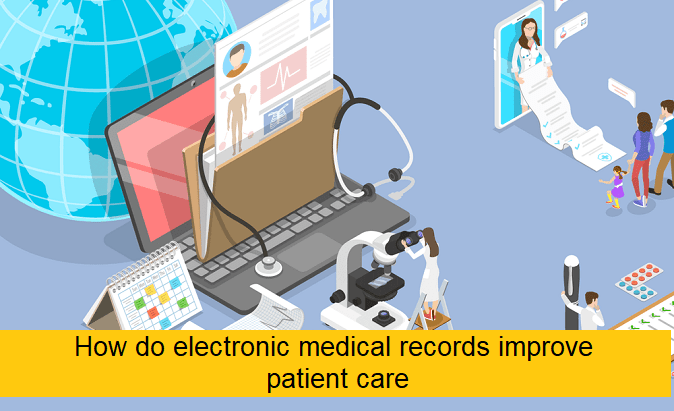In this article, we will see how do electronic medical records improve patient care?

The transition of patient data from paper to computers using electronic health records (EHR or EMR software) has been proven effective. EHRs excel at safely collecting and maintaining patient data, but they’ve developed over time to contain more than just records and files.
Healthcare workers now depend on information technology more than ever in medical settings. Electronic health records are developed into tools that assist physicians and other providers in communicating data to colleagues, patients, and specialists, going beyond merely storing data.
Specialists and clinics can better serve patients and live up to their expectations thanks to technology that offers insights into a patient’s medical history and different data files.
This easily accessible and relevant data saves time-consuming processes and helps make therapeutic decisions more straightforward. The more medical providers with safe access to a patient’s critical medical records, the higher the likelihood that they will treat the patient effectively and promptly.
Here are some ways that EMR software not only makes doctors’ jobs easier but also—and most importantly—improves patient care.
Electronic health records, which were long viewed as little more than a device for entering data from paper to computers to what is now referred to as “the cloud,” are increasingly placing patients at the core of their own treatment.
These technology platforms can now analyze patient file information, speak with other medical professionals and specialists, and securely exchange that information. EHRs provide crucial technologies that facilitate physician workflow and improve patient outcomes.
Emphasizes preventive care
A potent tool that supports improved management of illnesses that can be prevented has emerged from the growth of the EHR. If doctors can identify those who still haven’t undergone vital screening checks, they can monitor their patients’ health.
They may send automated templates encouraging patients to schedule appointments for procedures like mammograms, colonoscopies, and other examinations using their EHR.
These precautions can aid in spotting the early warning symptoms of deadly conditions, including pancreatic cancer, colon cancer, renal illness, glaucoma, and more.
Read more: Top Cost-Cutting Techniques for 3D Printing and CNC Machining
Patient Engagement is improved
Software for electronic health records offers a crucial way to connect patient and physician communication. Their linked tools support personnel and practices in day-to-day operations and favorably influence patient happiness. For instance, integrated patient portals provide online appointment scheduling for patients.
In addition to reducing the strain on employees and freeing up phone lines, this gives patients another easy option to schedule an interview with their clinician.
This modern appointment booking method frequently includes computerized confirmations and reminders, which eases part of the administrative strain on the office personnel. The simplicity of information transfer is another kind of engagement crucial to patient happiness.
Compilation of Information
Medical personnel may be able to save lives if they have access to all of a patient’s information in one location. Whether simple or sophisticated, a patient’s medical history may be compiled, saved, and accessed on a unified platform with all other information.
This aids healthcare professional in making judgments that take into account all facets of a patient’s health. The thorough files clearly outline a patient’s treatment strategy, including family history and financial circumstances, offering clinicians a fuller picture.
Electronic health records or EMR software gives doctors and other healthcare workers a potent tool that aids in clinical decision-making and gives staff a more comprehensive view of a patient’s health data.



